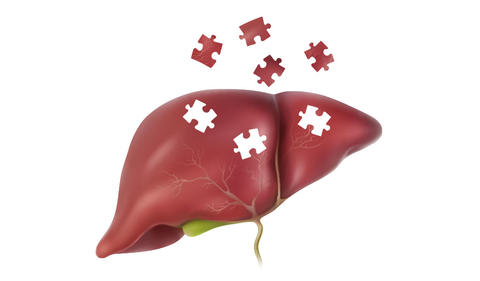Improvement of liver grafts through hypothermic oxygenated perfusion (HOPE) before transplantation
Eden J et al, J Hepatol. 2025;82(3):523-534
In this international study from 10 transplant centers, the perfusates of 473 liver grafts treated with HOPE before transplantation were examined. The detection of defined mitochondrial compounds in the perfusate was associated with graft loss, cholangiopathy, and renal failure after liver transplantation. Overall, HOPE can increase the quality of marginal organs, and the findings from this study could improve the assessment of graft quality.
Background and aims: While it is currently assumed that liver assessment is only possible during normothermic machine perfusion, there is uncertainty regarding a reliable and quick prediction of graft injury during ex situ hypothermic oxygenated perfusion (HOPE). The authors therefore intended to test, in an international liver transplant cohort, recently described mitochondrial injury biomarkers measured during HOPE before liver transplantation.
Methods: Perfusate samples of human livers from 10 centers in 7 countries with HOPE experience were analyzed for released mitochondrial compounds, i.e. flavin mononucleotide (FMN), NADH, purine derivatives and inflammatory markers. Livers deemed unsuitable for transplantation served as negative controls.

Results: They collected 473 perfusate samples of human donation after cardiac death (n = 315) and donation after brain death (n = 158) livers. Fluorometric assessment of FMN in perfusate was validated by mass spectrometry (R = 0.7011, p < 0.0001). Graft loss due to primary non-function or cholangiopathy was predicted by perfusate FMN values (c-statistic mass spectrometry 0.8418, 95% confidence interval [CI]: 0.7466–0.9370, p < 0.0001; c-statistic fluorometry 0.7733, 95% CI: 0.7006–0.8461, p < 0.0001). Perfusate FMN values were also significantly correlated with symptomatic non-anastomotic strictures and kidney failure, and superior for the prediction of graft loss than conventional scores derived from donor and recipient parameters, such as the donor risk index and the balance of risk score. Mitochondrial FMN values in liver tissues of non-utilized livers were low, and inversely correlated to high perfusate FMN values and purine metabolite release.
Conclusions: This first international study validates the predictive value of the mitochondrial cofactor flavin mononucleotide, released from complex I during hypothermic oxygenated perfusion, and may therefore contribute to a better risk stratification of injured livers before implantation.